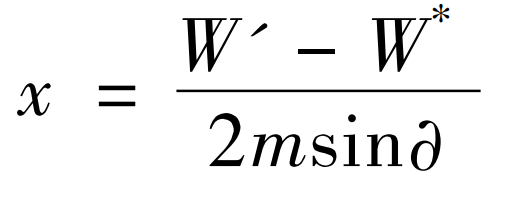1. Determine the modulus, tooth profile angle, top height coefficient and tooth root height coefficient
When determining the module, tooth profile angle, crown height coefficient and tooth root height coefficient, it is necessary to be familiar with the design standards adopted by involute spur cylindrical gears in various countries. For example, China, Germany, Japan and France mostly adopt the module system, and their tooth profile angles are mostly 14.5 °, 20 °, while the United States and Britain adopt diameter control, and their tooth profile angles are mostly 14.5 °, 20 °, 22.5 ° and 25 °.
The general calculation formulas of modulus, tooth profile angle, crown height coefficient and tooth root height coefficient are determined as formulas, which have nothing to do with whether they are displaced or not.
2. Judge whether there is displacement and displacement coefficient
There are many methods to determine the common line length, which can affect the accuracy of the common line length modification method. When the involute spur gear is a non-standard gear, the displacement coefficient becomes very important. If the measurement is too large, it may cause assembly difficulties. If the measurement is too small, it will lead to excessive clearance and cause unstable transmission or reverse impact. Therefore, enough attention must be paid to it during measurement.
Usually, this group of data is averaged through multiple measurements with a common normal micrometer. After the introduction of reverse engineering, this group of data can be measured directly in the reverse software. However, the length of common normal line is easily affected by tooth surface wear, which is only applicable to the case of small tooth surface wear.
Where: W ‘is the measured common normal length; W * is the theoretical common normal length; It can be calculated by looking up the table.


